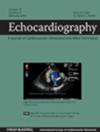A New Method Using the Four-Chamber View to Identify Fetuses With Subsequently Confirmed Postnatal Aortic Coarctation
Abstract
Objective
To determine the sensitivity, specificity, and false-positive rate among fetuses suspected prenatally to have coarctation of the aorta (CoA) using size and shape measurements of the fetal heart from the four-chamber view (4CV).
Methods
This was a retrospective study of 108 fetuses identified by pediatric cardiologists to be at risk for CoA. 4CV s from the last antenatal ultrasound performed by the cardiologists were analyzed. The end-diastolic area was computed using the point-to-point trace method around the epicardial border of the 4CV, and the largest end-diastolic length and width were measured from the epicardium to the epicardium to compute the global sphericity index (GSI) (length/width). Using speckle tracking analysis, the ventricular end-diastolic area, length, basal and mid-chamber widths were measured. The sphericity index of the base and mid-chamber of the ventricles was computed (length/width). In addition, the end-diastolic area ratios were computed as follows: right ventricular area/4CV area and the left ventricular area/4CV area. The z-scores for the above measurements were computed. Using logistic regression analysis, coefficients for predicting the probability of CoA from a test group of 27 fetuses with CoA and 27 without CoA was done. The logistic regression equation derived from the test group was applied to a validation group of 27 fetuses with CoA and 27 fetuses without CoA.
Results
The regression equation from the test group identified the following end-diastolic measurements: 4CV GSI, RV area/heart area, LV base SI, and the RV Base SI. The test group consisted of 14 of 27 fetuses with an isolated CoA (52%) and 13 of 27 (48%) with additional heart abnormalities. For the validation group, 10 of 27 (37%) had an isolated CoA, and 17 (63%) had additional cardiac abnormalities. Using the logistic regression equation derived from the test group (54 fetuses: 27 with CoA and 27 without CoA), the validation group (54 fetuses: 27 with CoA and 27 without CoA) demonstrated the following: sensitivity for detecting CoA of 98.15%, specificity 98.15%, and a false-positive rate of 1.85%. When the logistic regression was applied to the test group of fetuses with isolated CoA, 100% (14/14) were identified with logistic regression analysis. For the validation group, 9 of 10 (90%) of fetuses with isolated CoA were identified using the logistic regression equation.
Conclusions
Using length, width, and area measurements of the 4CV and ventricles from which ratios are computed detects 98.15% of high-risk fetuses who will demonstrate CoA following birth, with a specificity of 98.15%, or a false-positive rate of 1.85%.

 求助内容:
求助内容: 应助结果提醒方式:
应助结果提醒方式:


